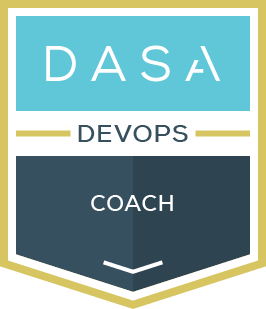In today’s dynamic IT landscape, DevOps has gained immense popularity for the tangible benefits it brings to both IT operations and business outcomes. However, amidst the buzz surrounding DevOps, there’s a critical aspect that often tends to get overlooked – cybersecurity. We explore the synergy between security and DevOps, shedding light on how these two seemingly distinct domains can complement and enable each other effectively.
DevOps, with its emphasis on agility, collaboration, and automation, has emerged as a game-changer in the world of IT. Its ability to accelerate software development and deployment has made it a top priority for businesses looking to stay competitive. However, as DevOps takes center stage, cybersecurity should not be left behind. Neglecting security can result in patchwork solutions, quick fixes, and potentially catastrophic security breaches. Fortunately, there’s a compelling case to be made for integrating security seamlessly into the DevOps process.
The Convergence of Security and DevOps
Security should be a top priority from the outset of any project. Business needs and goals should align with security measures, driven by client demands and compliance requirements.
A term that takes center stage in this conversation is “DevSecOps.” It represents the integration of security into DevOps practices, emphasizing that security is not a mere add-on but an integral part of the development and operations lifecycle. This shift has to be accompanied by a cultural change within organizations. Security teams need to embrace agile principles and methodologies, just like their development counterparts. They should collaborate closely with software delivery teams, understand the language, and follow agile principles to integrate security effectively. This includes adapting to agile practices such as agile planning, working with backlogs, and the practices of continuous integration and delivery (CI/CD).
This transformation doesn’t happen overnight. Instead, it is important to influence and enable team members to embrace new new methodologies, rather than forcing them onto the team.
DevSecOps is the bridge that allows organizations to reap the benefits of DevOps without compromising on security. As the IT landscape continues to evolve, embracing this cultural shift and integrating security into the software development process will be key to achieving efficiency and excellence.
The Evolving Role of Security, Risk, and Compliance in Agile Organizations: A Paradigm Shift
In recent years, there have been significant paradigm shifts in the role of security, risk, and compliance within organizations striving for Agile software delivery. This evolution has been driven by several key factors. For example, the increase in cybersecurity incidents, many of which have become public and have exposed vulnerabilities, prompted policymakers and regulators to step in and demand heightened security measures.
To adapt to these changes, companies have incorporated risk assessments and integrated security into their development processes through a concept known as “security by design.” This approach involves planning for mitigation and security control strategies from the outset, aligning with industry standards and regulations.
Moreover, organizations have begun to consider customer expectations and regulatory demands as integral parts of the development process. This shift has resulted in security being embedded in the entire development lifecycle, making it a holistic approach. While achieving 100% integration from the beginning may not always be feasible, the shift towards integrating security incrementally into Agile development is evident and advisable.
As a result of these developments, a cultural shift towards DevSecOps is gradually taking place. This approach encourages leadership to recognize the benefits of early security integration. Companies that adopt this approach find that their teams are more satisfied with the quality of the products delivered. By prioritizing quality control through security and including security from the beginning, businesses are achieving additional savings and avoiding potential financial burdens associated with addressing security issues after the fact.
Security’s role in DevOps and Agile methodologies is not limited to a specific department or function. Instead, it has become everyone’s responsibility within the organization. This collective approach fosters a culture of collaboration and teamwork, enabling proactive identification and resolution of security issues throughout the development lifecycle.
In summary, the evolving landscape of security, risk, and compliance in Agile organizations reflects the increasing importance of security in the development process. The integration of security by design, alignment with industry standards, and the cultural shift towards DevSecOps all contribute to improved product quality, cost savings, and enhanced security measures. By making security everyone’s responsibility, organizations are better equipped to address the challenges of cybersecurity in today’s rapidly changing landscape.
Security and DevOps Synergy: Proactive Strategies and Maturity Models for Cultural Evolution
The critical intersection of security and DevOps emphasizes the importance of proactive security measures and the need for maturity models to drive cultural change. Organizations can strengthen their security posture within a DevOps framework.
Security should be an integral part of the DevOps process. This proactive approach involves identifying and addressing potential security risks upfront, ensuring that security is woven seamlessly into the software delivery process, rather than implemented at the end.
One key strategy to achieve proactivity is the creation of an “Agile Risk Management Process” or “Agile Risk Approach.” This approach streamlines security assessments, avoids lengthy delays, and offers actionable security controls. By understanding business risks and automating security practices, organizations can expedite security measures and enable Agile teams to work efficiently.
Maturity models are another method that act as a catalyst for cultural change within organizations. Maturity models offer a structured framework to assess how security integration is progressing. They measure the impact of security on the development process, evaluate skill development, and gauge whether security is becoming a priority within the organization.
Security maturity models enable organizations to assess their progress, not seeking perfection but tangible improvement. They help measure the impact of security measures by tracking metrics such as vulnerability identification and resolution rates. For those looking to implement maturity models, resources like devsecops.org and OWASP maturity levels are great starts.
Measuring Security and DevOps Success
The four DORA metrics recommended by the DevOps Research Association (DORA) provide key metrics to measure DevOps performance: Deployment Frequency, Lead Time for Changes, Change Failure Rate, and Mean Time to Recover.
For instance, Deployment Frequency highlights the importance of efficient security processes to keep up with rapid deployments. Lead Time for Changes underscores the need for upfront security requirements to prevent delays during change implementation. By aligning these metrics with security practices, organizations can achieve a balance between fast feature delivery and security standards.
In conclusion, proactive security measures and maturity models play a critical role in fostering a culture of security within DevOps. Organizations that prioritize security from the outset, measure their progress, and embrace maturity models can confidently navigate the dynamic landscape of DevOps while ensuring the safety and integrity of their software in production.
Embracing Security in Agile: Progress, Collaboration, and Automation
Achieving security in Agile processes is a journey, not an instant destination.
Focus on progress, not perfection. While it’s tempting to aim for flawless security from day one, the reality is that building a robust security framework takes time and adaptation. Organizations need to accept that it’s a process that involves buying tools, training teams, and fostering a collaborative spirit where everyone sees security as their responsibility. The key is to make a plan to increase maturity levels gradually, understanding that it’s a journey of continuous improvement.
Foster collaboration between security and DevOps. Bridging the gap between these two traditionally separate functions is essential for successful security integration. By actively engaging with one another, teams can better understand each other’s challenges, expectations, and priorities. Security professionals are encouraged to proactively communicate their requirements, even embedding them into a maturity model, to facilitate a smoother and more efficient collaboration. Clients’ demands and the need for faster delivery make customer-centricity vital in this context.
Prioritize the concept of quick wins through automation. Organizations can leverage existing automation processes to incorporate security controls seamlessly. This approach not only enhances security but also accelerates development by making it faster and more efficient. The “crawl, walk, run, fly” strategy encourages organizations to start with small, manageable improvements and gradually work toward higher maturity levels. It’s a reminder that significant change doesn’t occur overnight, and incremental progress is more sustainable and effective.
Conclusion
Collaboration between DevOps and security teams is a fundamental step towards success. Bridging the gap and fostering understanding between these teams is essential for achieving security objectives efficiently.
Change in DevOps culture takes time, but the rewards of improved security and efficiency are well worth the effort. As organizations continue to evolve their DevOps practices, embracing proactive security measures and maturity models will be critical to their success.
By focusing on progress, fostering collaboration, and embracing automation, companies can navigate this evolving landscape successfully. Security is no longer the responsibility of a single department; it’s a collective effort that benefits both the organization and its customers.


DASA DevOps Coach
Help team members and other stakeholders apply DevOps concepts and principles within the organization.

